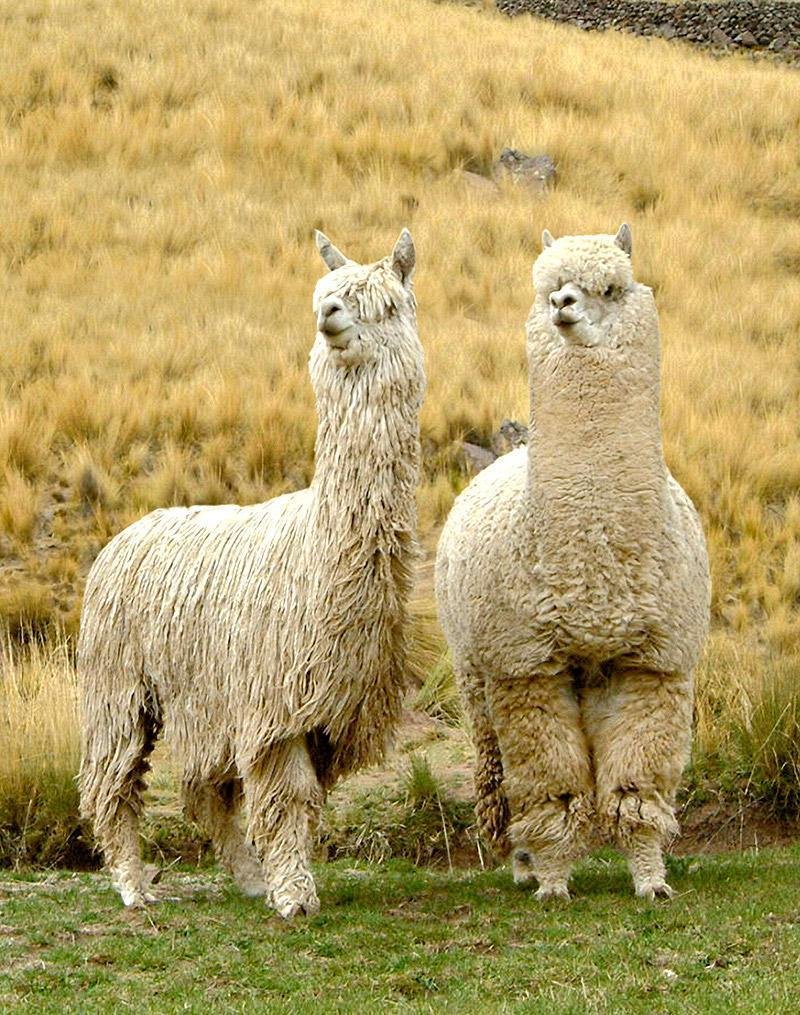ALL ABOUT ALPACA
ALL ABOUT ALPACA
Rich in history, Prima Alpaca once draped the bodies of Incan royalty, deeply revered for its supreme softness, rarity, and beauty. Alpaca, a species of South American camelid, is native to Peru and often mistaken for a Llama. Though there are similarities between the two mammals, one distinguishing feature is how considerably shorter the alpaca is.
There are two types of alpaca, each carrying its own unique characteristics, the: Suri and Huacaya.
Image Credit / Sandra Jordan
SURI
The Suri (pictured left) is often distinguished by its long, straight locks and known to produce soft, silky fabrics.
HUACAYA
The Huacaya (pictured right) produces crimped fibers, imparting a “fluffy” or “fuzzy” appearance which is why this type of alpaca is often referred to as “teddy bears”.
ALPACA FABRIC
Image Credit / Sandra Jordan
Alpaca fabric, synonymous with luxury, is a prized natural fiber that can be found in an array of natural shades and is utilized in numerous formats; from clothing, upholstery, and more. Alpaca fabric, often rivaling wool, is sometimes favored and viewed as superior due to a number of natural qualities inherent to the animal itself.
TOP ALPACA FABRIC CHARACTERISTICS
Image Credit / Sandra Jordan
SUSTAINABLE + BIODEGRADABLE / Known as a sustainable fiber, alpaca is often recommended over wool or cashmere to those looking for greener options. It’s also biodegradable as it’s a natural protein fiber.
HYPOALLERGENIC / Alpaca fabric doesn’t have lanolin, a natural wax released by some wool-producing animals that may sometimes cause an allergic reaction.
SUPER SOFT YET DURABLE / Fibers are significantly smaller in diameter compared to wool fibers, lending a luxurious soft and silky texture — minus the itchiness wool is at times known for.
UV PROTECTION / Alpaca fiber naturally shields harsh UV rays, reflecting light and allowing the material to retain its natural color without fading over time.
DOESN’T PILL / Fun fact: alpaca is the only wool in the world that doesn’t pill!
WATER RESISTANT / The fibers’ water resistance and low water retention rate, make the use of alpaca fiber favorable in humid environments.
FIBER MEMORY / Unlike some fabrics that can retain the impression of heavier objects when placed upon them, the hollow core of alpaca fiber enables it to expand back to its original form.
TEMPERATURE REGULATING / Alpaca fabric is thin and hollow, which enables the animal to thrive in extreme climates. In colder environments, the hollow fiber contracts, allowing the Alpaca to retain and regulate its body temperature. In hotter environments, the fiber expands its hollow core, keeping the Alpaca cool. This unique characteristic remains true, even after the fabric is shorn from the animal.
NATURAL INSULATION / The alpaca’s hollow fibers retain your body heat while remaining breathable.
ALPACA IN INTERIORS
Image Credit / Sandra Jordan
Alpaca fabric has been gaining popularity over the years and is appearing more prominently in interiors. We had the pleasure of touring Sandra Jordan’s property in Healdsburg, California and saw firsthand the versatility of alpaca expressed in various use cases — from upholstered furniture (and walls), sumptuous drapery and shower curtains, to throw pillows and blankets.
Sandra Jordan’s casita in Healdsburg, CA. Image Credit / Gary Hutton
Sandra Jordan’s casita in Healdsburg, CA. Image Credit / Gary Hutton
Sandra Jordan’s casita in Healdsburg, CA. Image Credit / Gary Hutton







